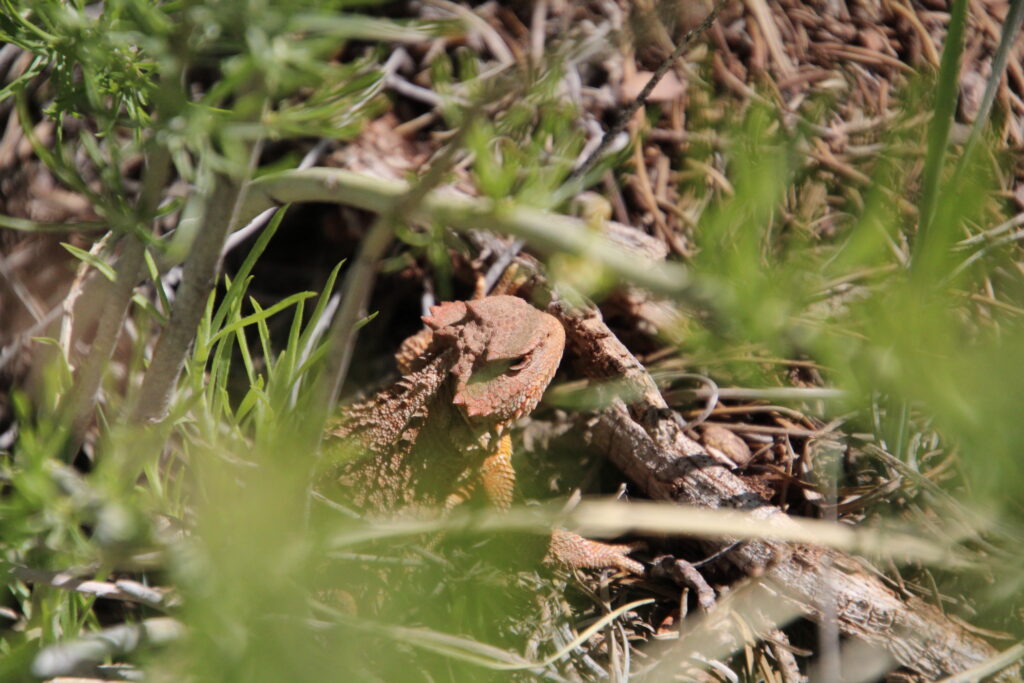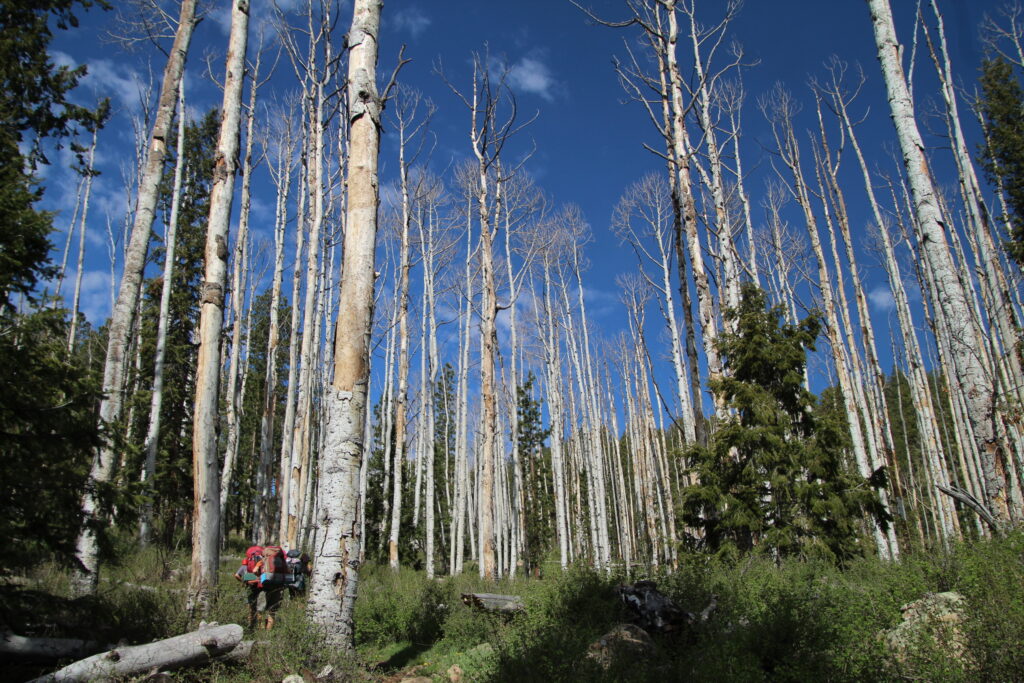What is Wilderness? A place to hike? A government designation? A place where the only sounds are the songs of the birds and the wind shaking the trees? This is the question I ask myself during our backpack though the Dark Canyon Wilderness Area. During our descent into the canyon, many feelings run through my body. I feel as though I am in the Wilderness. According to the government, I am. At the same time, I am reminded of the presence of humanity at every turn. Fire rings, fences, and trails carved into the landscape. Wilderness, to me, is the parts of the world where the only modern man-made object in sight is the occasional plane passing overhead. This is my romanticized picture of Wilderness. In reality, what we have seen here is about as wild as a place can get. Who am I to talk, I enjoy the fire rings and benefit from an easy path to follow just like everyone else. How can I preach preservation when I too benefit from the management of these areas?

Our relationship with the environment in the modern era has changed. We live on the land but not with it. Even as I walk through this Wilderness area I experience only a fraction of what it would be like to truly live entirely in this environment; for at the end of this course I will, for a time, return to my western-oriented, air conditioned, comfortable home. There have been humans living with this land for thousands of years, so it would be incorrect to say that we as humans should be separate from these areas we deem “preserved”. Despite my transience, I have found that throughout my time hauling my life around on my back in this remarkable place that I have become more connected to the environment around me. By spending so much time out here I have grown an intimate connection with the environment around me. I have found that it’s actually rather essential that I cultivate this connection as there is no future in which I can exist devoid or disassociated from this place that we build our cities upon.
In “The Trouble with Wilderness” by William Cronan, Cronan details how our very idea of Wilderness is simply a cultural construct – one that in its simplest form tries to separate humans from the world we hold so dear. The fact that we have specific areas which we designate as Wilderness propagates the idea that we as people are not in any way interacting with the environment when we are not within these Wilderness areas. To think that we have no connection, no effect on the world when we are outside these Wilderness areas makes us more ignorant of our influence on the environment around us than many of us would ever hope to be. My instructor, Eva, pointed out how we as backpackers take care and keep track of every piece of trash we produce in the backcountry. We pack it out of these areas with intention, just to throw it away and have it trucked to an unseen landfill. Either way it ends up in the outside world, whether we leave it out here as litter or put it in the right bin to be “disposed of.” This reflection made it evident to me that just because my trash doesn’t end up in the Dark Canyon Wilderness, doesn’t mean that it doesn’t end up somewhere else where it does just as much damage.
At the moment, our society is structured in such a way that we consider ourselves separate from the areas we designate as “wild.” We treat one area as though it is the pristine picture of the earth – untouched – and the other like it is ours to do what we want with. Through my experiences I have come to realize that we live in one world and everything we do in one area affects all the other areas. In order to live sustainably, we must not separate the two. Cronan illustrates how important it is to understand this and how, when we separate the two, it creates a culture of ignorance – ignorance to the connection to the world around us which in turn fuels the unsustainable model of society we currently have.

In the Dark Canyon Wilderness, our group has debated what constitutes the “natural world.” We have asked what it looks like and what our place is in it. Are we a part of it? Is it something we visit? I don’t know the answer – certainly not for our society as a whole. But for me it is everything. Every place we go we must treat as the natural world, as the lines we see on maps only exist on these maps and in our minds. I am learning to see the world as a whole and not as separate areas based on these imaginary lines. Our society’s relationship with the world around us must shift from understanding it as separate to understanding it as a system – a system that acts as a whole and is not separated into parts based on arbitrary lines, a system in which our society works in direct relation and in direct consideration of the environment around us. In other words, as a socio-ecological system, where our modern human society understands and acts as though we directly influence and are directly influenced by the environment around us. Because we do and we are.
When I started this course, I thought that I had to get out of one part of the world and into another to become connected with it. My goal is to have an intimate connection with the world I live in. To me this means to not just live in the world but to live with it. As I sit in this dried up river in the bottom of Dark Canyon, basking in the sunlight, I realize that in order to live this way I must not separate the world into sections. I must treat every space I am in as equal, with equal respect and equal admiration for this beautiful place I call home.